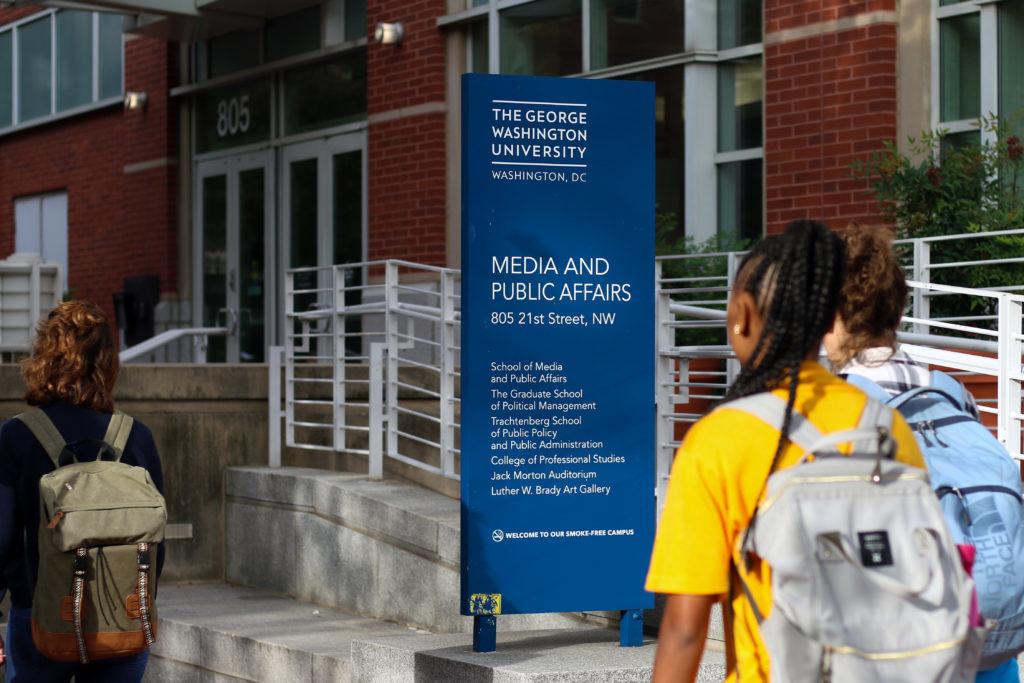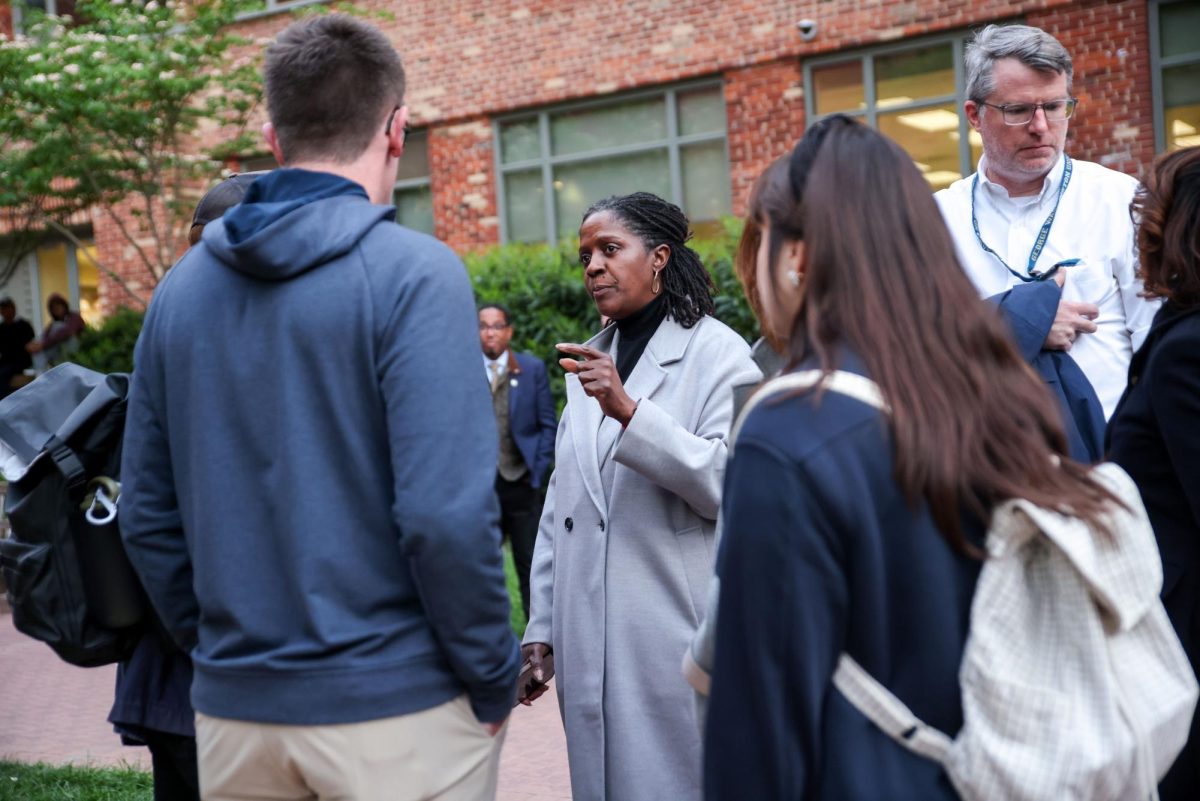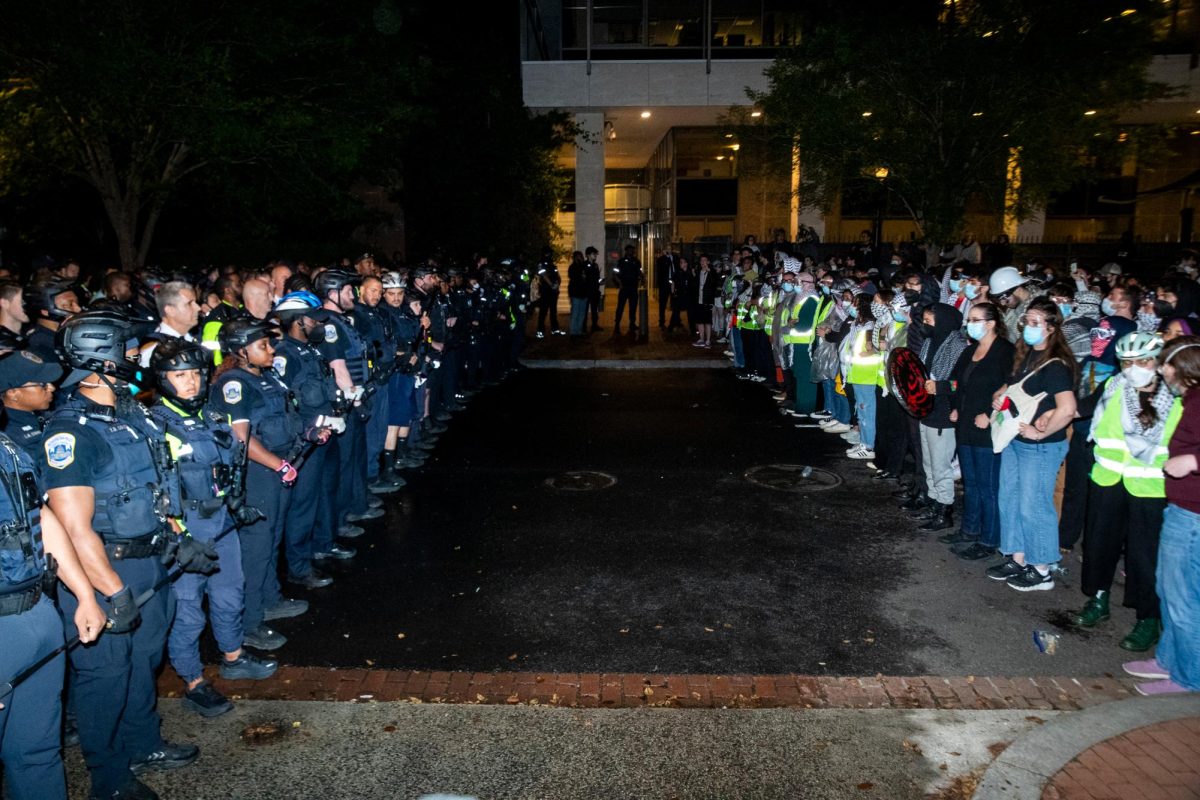Updated: Oct. 11, 2018 at 9:50 a.m.
A professor from the School of Media and Public Affairs is pushing students to reconsider the credibility of the last news story they retweeted.
Matthew Hindman, an associate professor of media and public affairs, co-authored a study published last week analyzing more than 10 million tweets from fake news producers and distributors over two 30-day periods before and after the 2016 presidential election. The study found that roughly 4 million tweets linked to fake news after the election – and about 84 percent of the accounts spreading the false information are still active.
Hindman said the study casts doubt on the common perception that fake news is an industry dominated by “hundreds of tiny little sites that are run by teenagers in Moldova” churning out articles.
“You can find some of that, but that’s not the vast majority of the problem and certainly not the most important part of the problem, at least according to our research,” he said.
The study was published by the Knight Foundation, a nonprofit institution that supports research in media and journalism.
The study used a “seed set” of more than 600 websites from OpenSources, an aggregation site that lists websites and rates their credibility. The subset included a series of websites that publish conspiracy theories and fake news, including popular outlets like InfoWars and the Centre for Research on Globalization. From there, researchers identified 700,000 Twitter accounts that frequently link to these outlets’ articles.
Using proprietary algorithms, Hindman and his co-author Vladimir Barash, the science director at social media analytics company Graphika, analyzed and mapped the more than 10 million tweets over two years.
Hindman said the data analysis revealed that a clustered group of accounts that frequently interact with each other constitute the center of Twitter’s consolidated fake news network. Just 10 of the largest conspiracy websites dominate the fake news landscape on the social media platform, accounting for 65 percent of conspiracy news links, according to the study.
“They link to each other a lot, they follow each other and are followed in turn, and they tweet regular links to fake and conspiracy news, but they also typically do a lot of other mainstream or just highly partisan links as well,” he said.
The study found that while fake news has favored President Donald Trump and Republicans, left-wing fake news decreased significantly more than right-wing conspiracies after the 2016 presidential election.
The idea for the study, Hindman said, “came out of this lack of understanding of the basic, descriptive reality of the online disinformation, particularly online disinformation on platforms like Twitter.” He said Twitter is the “most open” social media platform – meaning researchers can most easily access posts’ data.
Barash, a data scientist and the other co-author of the study, said his company worked on the quantitative side of the research. He said he produced a “social media map” that illustrated the popularity of fake news websites and articles on Twitter in the same way a physical map illustrates a location.
Barash said one of the major findings of the study was the number of automated accounts, or bots, in the fake news Twitter landscape. He said that of the most-followed 100 accounts in the data set, an open-source machine learning program judged 33 of them to be bots, based on their posting, liking, commenting and retweeting habits.
Barash said research on the topic began in December 2016, leaving the two researchers almost two years to work on the study. He said the extended length of the research allowed for a more comprehensive report.
“There’s a lot of really good science that gets done by taking a small problem and figuring it out the issue, but doing that for disinformation, you can miss the forest for the trees and present a very misleading picture of what’s going on,” he said.
Hindman and Barash said the funding for the study came from the Knight Foundation but declined to give the cost. Barash said research about disinformation was relatively cheap because Twitter is publicly available to anyone with “an internet connection and a computer.”
“Honestly, the most expensive part is the researcher’s time,” Barash said.
Barash said he hopes the study contributes to the larger global conversation about how to curtail fake news. He said one of the takeaways should be that there is no “magic bullet” or “one-stop shop solution” to the problem of disinformation.
“It takes a nuanced approach, some of which the platforms are engaging in right now, so I want to underscore that and salute them for their efforts so far,” he said. “But it’s going to take more than just banning some accounts to actually solve this problem.”
Hayden Smith contributed reporting.
This post was updated to reflect the following clarification:
Language was added to this post to clarify that the study included two 30-day analyses before and after the 2016 presidential election.





